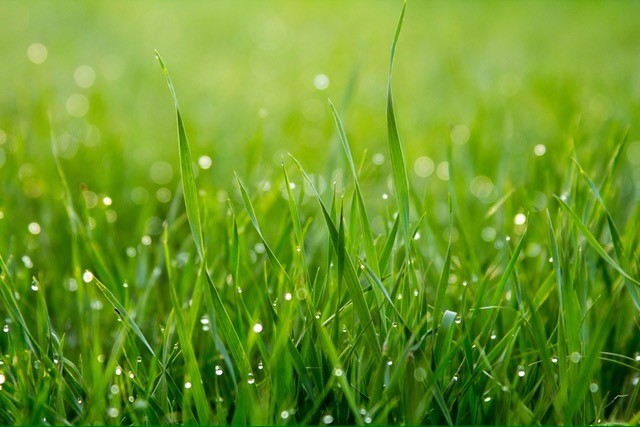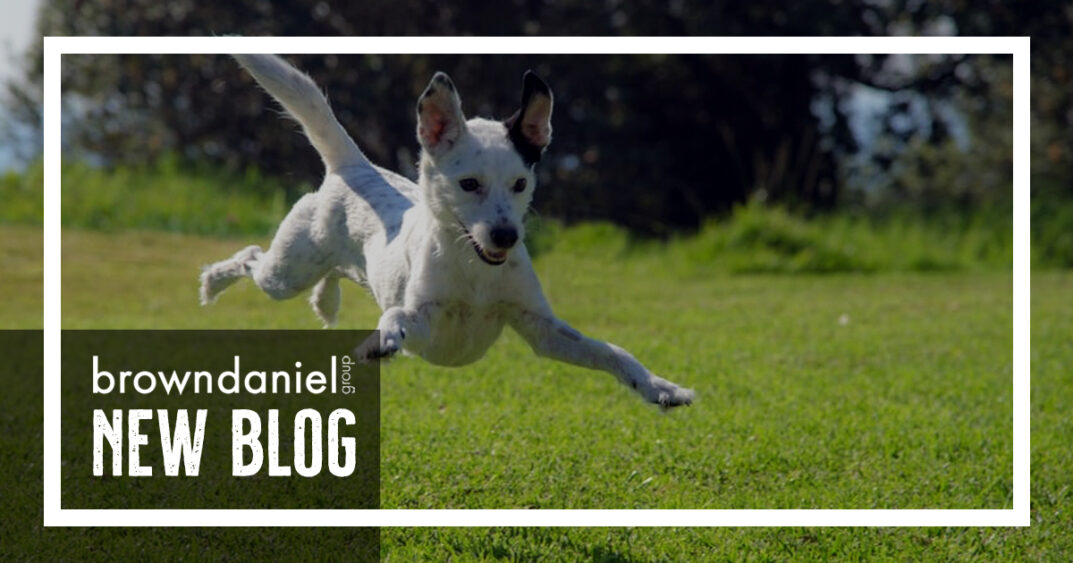
Your lawn is a large part of your home’s first impression. Whether you are thinking of listing your home for sale or you simply want to make sure that you are always putting forth a good impression in your neighborhood, understanding how to maintain your lawn is a necessary part of home ownership. Proper lawn maintenance not only helps your grass look great, but a beautiful healthy lawn can also add value to your home. Many people find the easiest route to a perfect lawn is to hire a professional lawn care company, while others find a deep sense of pride in maintaining their lawn themselves. If you’re not in the market to hire a professional lawn care company at this time, here are a few do-it-yourself lawn care tips that can help you make sure your lawn stands out on your street.
Follow the Right Schedule
A well manicured lawn is not just something you should think about during the spring and summer months. Properly caring for your lawn is a year-round exercise, and it is critically important that you give your attention to the proper tasks at the appropriate times.
Currently we are in the midst of a warm Georgia Spring, and the following lawn care tasks need your attention:
- Clean up from the winter dull season! You need to clear your yard of all leaves and debris that have gathered during the cooler and wetter months.
- Test your soil with a kit from your local garden center. The test will show you what minerals and chemicals are present in your soil and at what levels, then you can research tips for raising and lowering the levels as needed.
- Aerate your yard by making small holes to allow in the air water and nutrients that your grass needs. You can find the right tool for this at your local home improvement store.
- Check over your lawn mower to make sure that all blades are in good working order and that oil and gas levels are replenished.
- Dethatch to remove the layer of debris, dead grass, and other organic matter that lies just below your soil’s surface. This can be done by dragging a rake across your lawn.
- Fertilize based on your lawn’s specific needs as determined by the soil test.
- Use a pre-emergent herbicide to discourage the growth of weeds in your grass.
Looking forward to the summer months, you’ll need to switch your lawn care focus to the following:
- Keep your grass mown but do not cut it too short.
- Use post-emergent herbicide to continue discouraging weed growth.
- Treat your lawn for pests as needed.
- Water regularly during times of limited rainfall. Be sure to follow your county or city specific watering regulations in the event of a drought.
As temperatures begin to cool this fall:
- Fertilize your cool-season grass, testing your soil again to see if levels have changed so that you can change out your fertilizer appropriately.
- Continue to mow your grass, gradually changing to a shorter setting.
- If patchy areas have appeared in your lawn, fall is the time to re-seed.
And yes, even in winter you must still follow your lawn care maintenance schedule by doing the following:
- Protect fragile areas from heavy traffic – if your lawn looks less than healthy in some areas, limit the activity on this part of your lawn.
- Just because the weather is cooler, it doesn’t automatically mean it will be wetter. Continue to water your grass occasionally if it’s unseasonably warm or dry during the winter.
Make Sure You Mow Correctly

Using improper mowing techniques can be just as mad as not mowing your grass at all. First, make sure you are always working with a sharp mower blade. When blades are too dull, they can bruise the grass, making it weak and leaving it susceptible to disease, pests and weeds. Avoid cutting your grass too short. Especially during the warmer summer months, taller grass can help your the healthy blades you want in your yard win out in the competition for nutrients and water against the weeds and undesirable grass varieties that can spring up. Once the weather begins to cool you can lower your blade again, because grass should be mowed to a shorter height in the fall to prevent matting and disease in the winter. It’s also important to occasionally switch up your mowing patterns, so that you are not following the same route with your mower every time. This is important for upright growth and to avoid the appearance of ruts in your lawn. Also avoid mowing too early in the spring – your grass needs to reach a good height first before it is healthy enough for a first cut.
Fertilize at the Right Time
Fertilizer is an important part of your lawn’s diet, helping it get the nutrients it needs to stay healthy year round. For fertilizer to be truly effective, it must be applied at the right time. For a beautiful summer lawn, it is best for you to apply fertilizer when you first notice new growth in spring. A slow-release fertilizer is your best bet because it will help your grass to grow at a slow and even pace, which will save you from having to mow too frequently. Fertilizing time is when the soil test mentioned above comes in handy. The test will measure the PH level in your soil and will tell you how to neutralize it if your soil is too basic or too acidic. It will also tell you which nutrients your lawn has enough of and where it could use a boost. You should avoid applying fertilizer to your lawn in the summer when temperatures are quite hot, or in the winter when your grass is more likely to be dormant.
Water Your Lawn in the Mornings

Moisture is one of the most important factors in grass growth, and both too little and too much moisture can disrupt your efforts to grow a lush, green lawn. During times when limited rainfall is expected, plan to water your lawn once or twice a week, always early in the morning. A good soaking on just one or two days out of the week is much healthier for your lawn than a small amount of watering daily. Daily watering can lead to an underdeveloped and shallow root systems that will make it more susceptible to issues. If you experience heavy rainfall, hold off on watering for several days until the soil has dried out sufficiently.
Don’t Skip Aeration
In early spring, once all danger of an additional frost has past, it is important for your lawn to be aerated before you begin seeding, fertilizing and a regular watering schedule. You can use a core aerator or manual fork to aerate your lawn, both of which are available at your local garden center or big box home improvement store. Aerating a lawn helps it with water movement and oxygen absorption, and helps your lawn digest fertilizer and seed that is added. Once you have finished aerating, break up the soil cores (the pieces removed when your lawn is punctured) and leave them on your grass, allowing them to decompose nutrients back into your lawn.
Plant the Right Grass
You may think you know exactly what kind of grass you want in your yard, but it is important to make sure that the grass you choose is a variety that can flourish given your yard’s location and conditions. Bermuda grass does exceptionally well in Georgia’s hot summers, so feel free to fill the sunniest parts of your yard with this fine blade grass. It thrives in the summer heat with only moderate watering and fertilization. Zoysia does well in our area also, but you’ll want to use a good fertilizer to give it a head start on greening up. If your yard has a significant amount of shady areas, you might consider planting St. Augustine, Fescue, or bluegrass, as these varieties do not need as much direct sunlight to survive.
Don’t be Afraid to Overseed
If you have any patchy areas in your yard, spread grass seed liberally in these places, because this will help restore the lawn’s thickness. The best time to spread seed is in the spring and fall, but keep in mind that grass seed will need to be watered every day, so you may need to turn off your automatic timed sprinklers so that you can manually adjust how much you are watering in certain locations around your lawn. Make sure the soil is moist where seed has been spread, so it has a better chance of growing. You should still be careful not to overwater though, or use too harsh of a stream, or else the seed can be washed away.
Dethatch Your Lawn
Thatch is an organic layer of dead and living roots, grass leaves, shoots, and stems found between the soil and new grass. This layer builds up on your lawn over the dormant winter months, and can be beneficial in insulating grass roots during cold weather. However, a layer thicker than 1/2 inch can choke your lawn, and impede the ability of grass to take in nutrients, air and water. To dethatch your lawn, you can use a regular rake to gently break up the thatch. Be careful so that you do not not harm new growth. Unlike soil cores leftover after aeration, you should dispose of the loose thatch when you are finished.
Invest in Irrigation

An automatic sprinkler system can be a huge help to DIY lawn care aficionados, but a multi-zone sprinkler systems can cost anywhere from $2,000 to $4,000. If you don’t mind a little bit more manual intervention in your watering routine, a DIY sprinkler system kit is a much cheaper option. These kits come in both above-ground and below-ground varieties to fit the needs of your lawn. When deciding what time of sprinkler system to install, it’s important to remember that if you decide to put your home on the market, having a professional sprinkler system adds significant value to your home and is an improvement project that has a great return on investment.
Choose Your Herbicides and Pesticides Carefully
Using herbicides and pesticides can be a little intimidating for a DIY gardener who is just beginning to take over care of their lawn. If you decide to use these products yourself, be sure to read the labels and follow all instructions carefully, and be sure to keep children and pets away from areas where these products have been applied. As far as when to begin using these products, start in the spring when temperatures reach 60 degrees. This is when you should apply a pre-emergent herbicide to keep crabgrass and other weeds at bay. When the temperatures get warmer in the summer, it is time for you to use a post-emergent to discourage the growth of annual and perennial weeds. Pest-specific pesticides can be found at most lawn and garden stores if you have a particular concern with your yard.
Be Prepared to Invest in Your Lawn
A lush and gorgeous lawn doesn’t happen by accident, but it is more than worth the time and effort and cost involved. Curb appeal is not only important for potential buyers should you choose to sell your home in the future. It is also an important factor in keeping you happy and content with where you live. If you are looking forward to a potential home sale in the future, improving your lawn is a great way to increase the appeal of your home, and you will likely see a worthwhile return on your investment.

